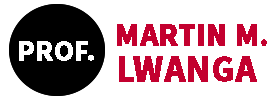Eng Mwangu had just taken over an exciting job as CEO of a government agency meant to regulate the rapidly growing telecom industry. Scouted and recruited from the US where he had been at the helm of the exploding cellular industry, he had taken up this job, because he saw an opportunity to make a difference back in his African country. With newcomers to the industry, some opportunistic and quite unscrupulous, he felt there was a need to develop a strict regulatory policy without deterring innovation.
Because the agency was meant to serve diverse stakeholders one of the things clear on his mind was to run an efficient organization, where clients were not kept delayed and telecom licenses would be issued expeditiously. He had all these ideas when he dropped in for his first Senior Management meeting, where he decided to let his Deputy chair the meeting as he studied the organization. But then he was in for a rude shock.
First, while the meeting had been scheduled to start at 9 am, which is exactly when he showed up, quorum only materialized half an hour later. Eng Mwangu had left some bills on his desk which needed urgent clearance for payment. He had scheduled an appointment with a diplomatic official at 10:30 am interested in offering capacity-building support. For this reason, he was impatient to start the meeting but staff casually checked in, looking quite surprised to find him already waiting.
But that was just the beginning. The interim chair started by asking members to first draw up an agenda. A debate started and it was 15 minutes before issues for discussion where agreed on.
Once the meeting got underway, it seemed like a freewheeling debate of ideas. Eng Mwangu observed that members had to first rapidly peruse through documents before giving their views, though others just jumped in the middle and argued vehemently without any basis. The meeting was interrupted with servings of teas and eats. Eventually, it took three hours to conclude on all matters, but then Eng Mwangu wasn’t clear on what was agreed and who was to report back on what.
Back in his office, he found his visitor had left. Eng Mwangu decided to call up his deputy. “I want to make a few changes concerning the next meeting,” he shared.
“At your service,” his deputy agreed, eager to know the direction.
“First when a meeting is scheduled to start at 9am, this should be so, without waiting.”
“But our people are slow!” the deputy hesitated.
“Then a meeting can’t start without an agenda,” Eng Mwangu went on, decisively. “If there are papers to be discussed they must be sent well in advance and not read in the course of the meeting. People should come to the meeting with the agenda already known. After prayer, I will open the meeting with 10 minutes of Chair’s remarks and responses. The time allocated for issues will be 40 minutes. The last 10 minutes will be for resolutions and reporting on last meeting action log items.”
“But Sir these people hate being rushed,” argued the deputy. “You will miss out on ideas.”
“Then we must choose between having organization full of good ideas but hardly executing them,” countered Eng Mwangu, “It’s about the urgency of time.”
In the following weeks, this system of managing one-hour meetings was introduced. At first resisted, staff quickly adjusted once it was clear this was the new norm, and it soon became a standard. What was even more interesting is that given the leadership support, staff further down the ranks adopted the same practices, too.
Meetings are key to running organizations. They bring together participants to agree on action items and follow up on past decisions. They provide a forum for exchanging and debating new ideas. Unfortunately, as we have seen here and know well, many organizations are paralyzed with poorly structured meetings. Many meetings are uncoordinated and without focus, eating into the organization’s time, ultimately affecting results. Given all the time they take and effect on organization results, time should be given to how to run effective and productive meetings in the workplace.

